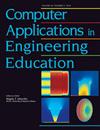Enhancing self-regulated learning in engineering education with lightboard videos as a support tool
Abstract
Background
For engineering students, a lack of motivation and continuous study are common issues that lie in low academic performance. Active teaching with audio-visual systems, on the one hand, and self-regulated learning methodologies, on the other, have shown to have a high potential in these aspects.
Purpose
Assessing a proposal based on a self-assessment and integrating it into a traditional teaching process to improve student engagement and performance.
Design/Method
When once explanation of a thematic block was complete, we set a series of exercises encompassing key concepts for students to solve at home within a limited time. Students then had to upload their solutions to an e-Learning platform and subsequently received dynamic videos, created using a lightboard studio, showing solutions to the exercises to assess their level of learning through self-evaluation.
Results
The activity was highly valued by the students. They were more motivated in their studies than the control group, which is reflected in increased participation in the course and in the number of students who sat for the exams. However, according to the metrics of the videos and their responses to the questionnaires, students did not fully utilise the available resources. This is likely due to the extrinsic motivation facilitated or failure to treat the self-assessments as exam simulations. This resulted in academic performance that is very similar to that of the control group.
Conclusions
The results obtained demonstrate the usefulness of the teaching proposal for the purpose of this work, although it requires some improvements.


 求助内容:
求助内容: 应助结果提醒方式:
应助结果提醒方式:


